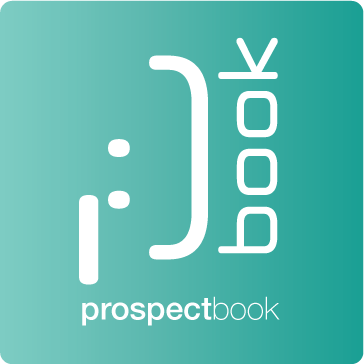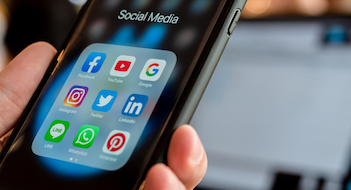The world’s largest professional networking platform, LinkedIn, is known as one of the most influential social media websites with more than 575 million members.
LinkedIn is strictly for business purposes, where members communicate with business associates, clients and co-workers. It can enhance your profile, build brand awareness and generate potential client leads. LinkedIn is the perfect platform to help you engage with your clients.
Find out how to attract more clients and, eventually, how to interconnect with potential clients via LinkedIn.
6 Steps to attract more clients with LinkedIn
Whether you are an entrepreneur, professional service provider or salesperson, LinkedIn can help you find new leads to develop your clientele.
LinkedIn is a social media platform that facilitates users to connect and build relationships through a robust professional network. In contrast to physically attending business networking events, people have access to a much larger pool of prospective clients and strategic alliances. LinkedIn helps you:
- Gain access to decision-makers
- Engage with a broader audience
- Drive more traffic to your blogs and sites than any other social media platforms
- Generate more leads (277% more effective than Facebook or Twitter)
LinkedIn is the ultimate relationship-building platform for a large number of professionals, business owners and C-level executives. It gives you unlimited access to your target market through tools with which you can search, connect and build relationships. LinkedIn drastically increases the effectiveness of your sales efforts and reduces your sales cycle.
Create your professional profile, design a lead generation plan and spend no more than 15 minutes a day (depending on your industry and goals) to start filling that sales funnel with your ideal clients.
Here are six steps to help you start attracting more clients on LinkedIn today.
1: Create your professional profile
First, make sure that you have a professional and search-optimised profile. Since most of your interactions on LinkedIn will lead back to your professional profile, it’s essential to sell yourself through your experience, competencies and skills. So, the best place to start is your profile headline. Ideally, your headline should also include a concise description of what you have to offer. If you’re in sales, for example, lead with your official title or a generalised statement on your role, i.e. “Seeking companies looking for Sales, Marketing, Customer Service, BI & Data quality integration, and Implementation”.
Why is that headline so important? Because it will appear next to your name when:
- Your profile appears in Google search results.
- People look at your profile for the first time, regardless of if they use or not LinkedIn.
- Your profile appears in LinkedIn search results.
- You post new discussions in LinkedIn groups.
- You publish posts on LinkedIn Publisher.
- You send private messages.
- People send an invitation to connect with you.
- You send recommendation requests.
- Someone sees you in their list of contacts.
- Your profile appears on the sidebar of another LinkedIn user profile as someone people also viewed.
People are more likely to click on your profile based on an exciting and descriptive headline than if you only said, “VP of Sales.
2: Identify potential clients
Lead generations on LinkedIn require you to have a clear grasp of your target market, so begin by thinking of familiar titles that they would use to describe themselves. Familiarisation is a crucial part of finding prospects to connect with online. These titles relate to their vocation. For example, CEO, Accountant, VP Sales, HR Specialist, etc. Once you have a few titles that you want to target for new prospects specifically, you can easily find them using two different methods:
- LinkedIn Advanced Search
- LinkedIn Groups
3: Send a thank you message
When you receive a notification that someone has accepted your connection request on LinkedIn, reach out to them with a personalised “thank you” message. Pitch your services or promote yourself by adding the URL to your website in your signature. If possible, find some commonality in their profile that can engage them in a conversation. The only thing you should be concerned about is getting acquainted with that person and leaving a positive impression.
Click here for a sample message.
Click here for b sample message.
4: Send relationship-building messages
Set a reminder to reach out to your new connection in a week with a “Relationship Building” message, providing something of value to that person with no ulterior motive. Giving without the expectation of receiving is a critical part of building authentic relationships with people.
Preferably, reach out with something relevant to their business goals. When done right, it shows that you understand their struggles and can plant the seed for a future client.
Here are a few examples of content you can share:
- Checklists
- Reports
- Articles/Blog Posts
- Videos
- Case studies
- eBooks
Be sure to use LinkedIn’s Relationship Tab to keep your prospects organised when sending your relationship-building messages.
5: Engage with them on shared LinkedIn groups
Take a peek at the groups in which your prospects have joined. If you aren’t already a member of any groups that your competitors are part of, start entering the most relevant ones that fit the target audience you are looking. You can join up to 50 groups. Not everyone is active on LinkedIn Groups, but when you find a prospect that is, it provides an excellent opportunity to get their attention and reveal your expertise and credibility.
6: Move relationships offline
The number six-step is the most critical step where most people fall short. Without this final step, there’s a whole lot of social activity without selling. Once you’ve built enough rapport and established your credibility, you should make the transition to an offline conversation.
Remember, it is offline that you convert a prospect to a client. Try selling or pitching by having a conversation and by getting to know what problems your potential client is dealing. Only then can you offer a solution.
If you’ve followed steps 1-6 properly, your prospect should be open to the idea of speaking offline since you’ve demonstrated:
- Credibility
- Expertise
- Your ability to provide value
Sources:business.linkedin.com & www.salesforce.com



